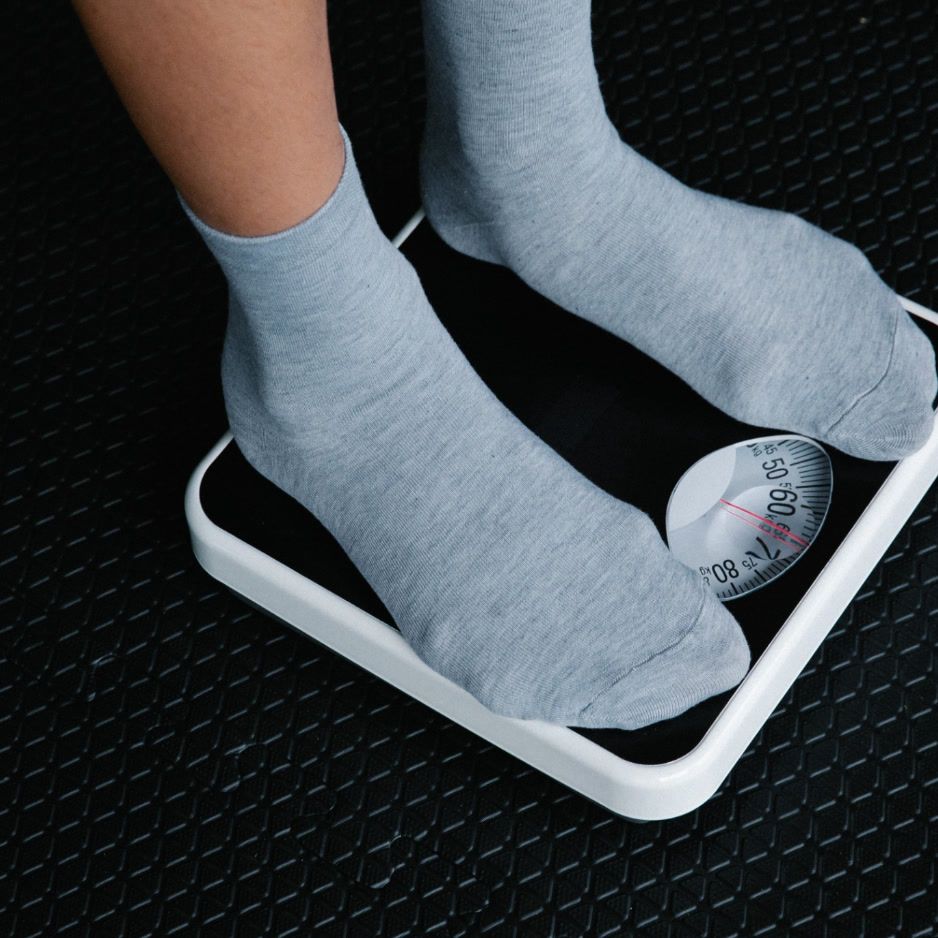HIIT for Men: The Ultimate Guide to High-Intensity Interval Training
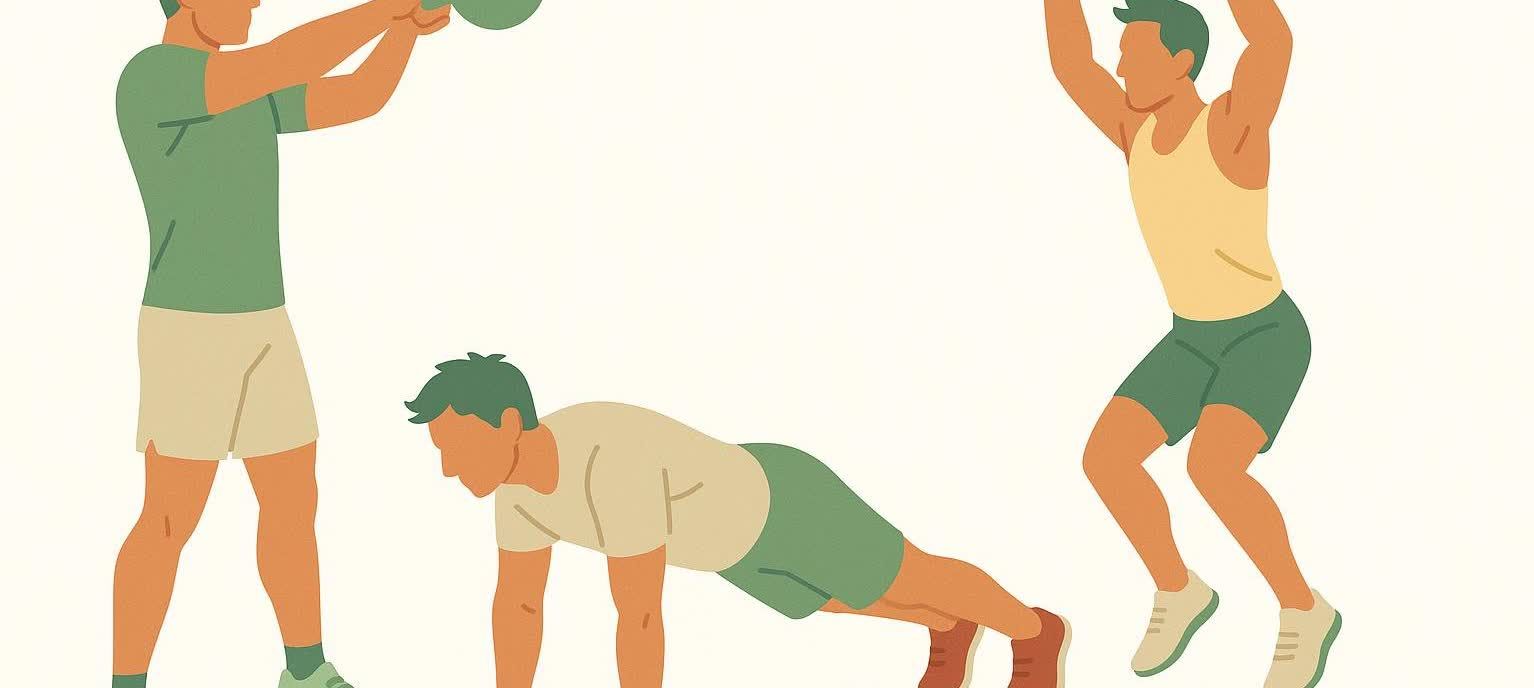
HIIT for Men: The Ultimate Guide to High-Intensity Interval Training
High-Intensity Interval Training (HIIT) delivers maximum fitness results for men by alternating short bursts of intense exercise with brief recovery periods. This comprehensive guide covers everything from testosterone-boosting protocols to muscle-building workouts tailored specifically for the male physique.
Whether you're a busy professional with 15 minutes to spare, a fitness enthusiast looking to break plateaus, or a man over 40 focused on health optimization, HIIT offers powerful, efficient solutions.
Men respond uniquely well to HIIT training due to physiological factors including higher baseline testosterone levels, greater muscle fiber recruitment capacity, and enhanced recovery from explosive efforts. This guide explores how to harness these advantages for maximum results.
Why HIIT Works Exceptionally Well for Men
The Testosterone Connection
Men's Journal reports that high-intensity interval training significantly increases total testosterone levels in men, with studies demonstrating improvements in both total and free testosterone after just 6-8 weeks of consistent training. Six weeks of HIIT increased free testosterone from 7.0 ± 1.2 ng/dL to 7.5 ± 1.1 ng/dL in male masters athletes, while 8 weeks of HIIT combined with circuit strength training boosted testosterone levels by 36.7% in men aged 35-40.
Unlike steady-state cardio, which can actually decrease testosterone with excessive volume, HIIT's short, intense bursts stimulate natural hormone production. This makes HIIT particularly effective for men looking to maintain or increase muscle mass while burning fat.
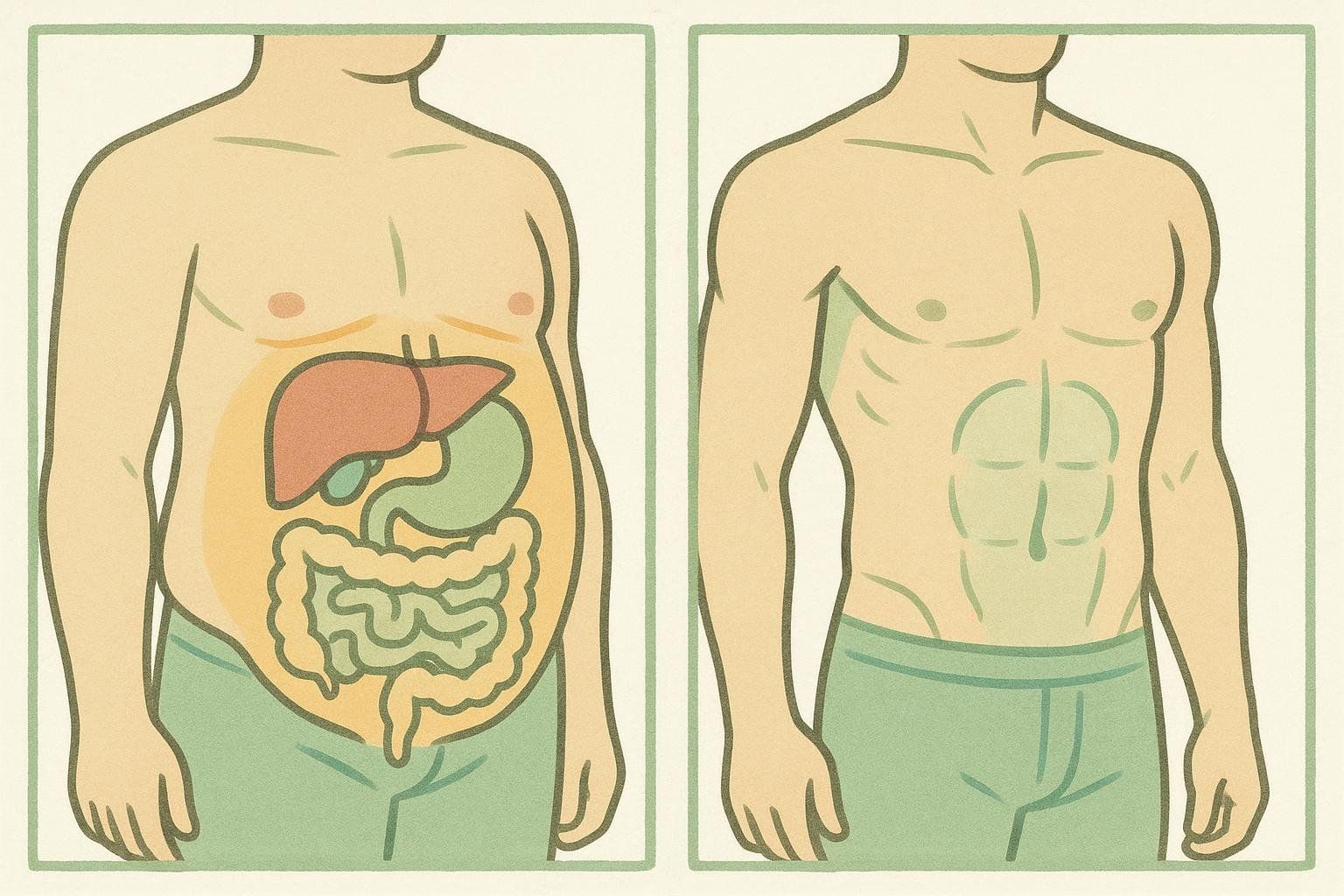
Visceral Fat Reduction: A Male-Specific Advantage
Men typically store fat around the midsection as dangerous visceral fat—the type that surrounds internal organs and increases health risks. HIIT has been shown to be particularly effective at reducing both subcutaneous and abdominal body fat, with research indicating superior fat loss compared to traditional steady-state cardio in half the time.
The combination of testosterone optimization and visceral fat reduction makes HIIT a powerful tool for men seeking to improve body composition. For men, a waist measurement over 40 inches indicates unhealthy visceral fat levels, and HIIT training has proven particularly effective at reducing these measurements.
Muscle Preservation and Growth
When combined with adequate protein intake, HIIT prevents muscle mass loss during caloric restriction phases while simultaneously promoting fat loss. This preservation of lean muscle tissue is crucial for men, as muscle mass naturally declines after age 30, with accelerated loss after 40.

15-Minute Bodyweight HIIT for the Time-Crunched Man
Perfect for the busy professional who needs maximum results in minimum time. This routine requires no equipment and can be done anywhere—hotel rooms, offices, or home.
Quick Power Circuit (15 Minutes)
Protocol: 45 seconds work, 15 seconds rest
Structure: Complete 3 rounds of this 4-exercise circuit
Exercises:
- Burpees - Start standing, drop into squat, kick feet back, push-up, jump feet forward, explode into jump
- Jump Squats - Feet shoulder-width apart, squat to parallel, explode upward, land softly, repeat
- Push-ups - Hands wider than shoulders, lower chest to ground, maintain straight line, push back up
- High Knees - Run in place, bring knees to hip level, pump arms, stay light on feet
Instructions: Complete one set of each exercise to finish one round. Rest 45 seconds between complete rounds. Repeat for a total of 3 rounds.
Time-Efficient Testosterone Booster (12 Minutes)
Protocol: 30 seconds work, 10 seconds rest
Structure: 3 rounds of 4-exercise circuit
Perform a complete round of all 4 exercises before resting. Rest for 60 seconds between complete rounds.
Exercise circuit:
- Bodyweight Squats - Chest up, weight in heels, descend until hips below knees, drive through heels
- Push-ups - Rigid plank position, lower until chest nearly touches ground, 45-degree elbow angle
- Plank Hold - Straight line from head to heels, engage core and glutes, breathe normally
- Jumping Jacks - Feet together to apart, arms overhead, control and rhythm
This format delivers the hormonal benefits of HIIT while fitting into the busiest schedules.
Advanced HIIT Protocols to Shatter Plateaus
For the experienced athlete looking to break through training plateaus and maximize performance gains.
Advanced Strength and Power Circuit (25 Minutes)
Protocol: Combine strength and power in supersets
Structure: 4 circuits, each pairing strength with explosive movement
Circuit Options:
-
Lower Power Super-Set:
- Goblet squats (6 reps, heavy weight) - Weight at chest level, slow controlled descent, focus on depth
- Jump squats (10 explosive reps) - Immediately follow, focus on maximum height and soft landings
- Rest: 90 seconds between supersets
-
Upper Power Super-Set:
- Push-ups (as many reps as possible in 30 seconds) - Maintain proper form throughout entire period
- Medicine ball slams (15 reps) - Immediately follow, raise overhead, slam down with maximum force
- Rest: 90 seconds
-
Full-Body Power:
- Deadlifts (5 reps, challenging weight) - Bar close to body, hip hinge, neutral spine
- Burpee broad jumps (8 reps) - Perform burpee then jump forward as far as possible
- Rest: 2 minutes
-
Metabolic Finisher:
- Kettlebell swings (20 seconds all-out) - Hip drive, arms relaxed, bell to shoulder height
- Rest (10 seconds) × 8 rounds
EMOM Strength-Power Protocol (15 Minutes)
Every Minute on the Minute structure:
- Minutes 1-5: Perform 5 burpees at the start of each minute. Rest for the remainder of the minute.
- Minutes 6-10: Perform 8 thrusters at the start of each minute. Rest for the remainder of the minute.
- Minutes 11-15: Perform 10 mountain climbers followed by a 15-second plank hold at the start of each minute. Rest for the remainder of the minute.
Progression Strategy: Weekly increases:
- Week 1: Base reps as listed
- Week 2: Add 1-2 reps per exercise
- Week 3: Add another 1-2 reps
- Week 4: Deload—return to Week 1 reps, focus on perfect form
This protocol challenges both strength endurance and cardiovascular capacity while maintaining the explosive power that stimulates testosterone production.

Joint-Friendly HIIT: Low-Impact, High-Reward Workouts for Men Over 40
Designed for men prioritizing joint health while maintaining intensity for fat loss and muscle preservation.
Chair-Assisted Power Circuit (18 Minutes)
Protocol: 40 seconds work, 20 seconds rest
Structure: 3 rounds of 6 exercises
Instructions: Complete one set of each exercise to finish one round. Rest 60-90 seconds between complete rounds. Repeat for a total of 3 rounds.
Exercises:
- Chair-supported squats - Sit back lightly onto chair, stand using leg strength, controlled tempo
- Incline push-ups - Hands on chair, walk feet back, lower chest to chair, straight body line
- Seated punches - Sit tall, alternate forward punches, engage core, rotate through torso
- Standing calf raises - Hold chair for balance, explosive rise to toes, control descent
- Modified mountain climbers - Hands on chair seat, alternate knees to chest, reduces spinal flexion
- Wall sits - Back against wall, thighs parallel to floor, breathe normally
Pool HIIT Workout (20 Minutes)
Protocol: 45 seconds work, 15 seconds rest
Structure: 4 rounds of 5 exercises
Instructions: Complete one set of each exercise to finish one round. Rest 60 seconds between complete rounds. Repeat for a total of 4 rounds.
Water-based exercises:
- Water jogging sprints - Alternate high knees and normal pace, water provides resistance
- Jumping jacks - Full range of motion, water resistance provides strength benefits
- Cross-country skiing motion - Arms and legs in opposition, engage core for stability
- Squat jumps - Jump from squat position, water provides soft landing
- Treading water - Keep body vertical using legs and arms, core stability challenge
Testosterone-Optimizing HIIT Programming

For Men Under 35: Building Peak Performance
Frequency: 4-5 sessions per week
Duration: 20-30 minutes
Intensity: 8-9/10 effort during work periods
Focus: Maximum power output, muscle building, performance
Sample Week:
- Monday: Advanced compound movements (25 minutes)
- Tuesday: Sprint intervals + strength finisher (20 minutes)
- Wednesday: Active recovery or light resistance training
- Thursday: Complex training protocol (30 minutes)
- Friday: Metabolic circuit training (20 minutes)
- Saturday: Outdoor activities (hiking, sports, etc.)
- Sunday: Complete rest
For Men 35-45: Prime Performance Maintenance
Frequency: 3-4 sessions per week
Duration: 15-25 minutes
Intensity: 7-8/10 effort during work periods
Focus: Fat loss, muscle preservation, hormone optimization
Sample Week:
- Monday: Full-body circuit (20 minutes)
- Tuesday: Lower body power + core (15 minutes)
- Wednesday: Active recovery (walking, stretching)
- Thursday: Upper body strength + cardio finish (18 minutes)
- Friday: Total body challenge (25 minutes)
- Weekend: Low-intensity activities, family time
For Men Over 45: Health Optimization Focus
Frequency: 2-3 sessions per week
Duration: 12-20 minutes
Intensity: 6-7/10 effort, emphasize proper form
Focus: Joint health, functional movement, cardiovascular fitness
Sample Week:
- Monday: Chair-assisted circuit (18 minutes)
- Wednesday: Pool workout or low-impact alternatives (20 minutes)
- Friday: Bodyweight fundamentals (15 minutes)
- Other days: Walking, stretching, recreational activities
Special Considerations for Men Over 40:
- Testosterone levels naturally decline by about 1% per year after age 30
- Longer warm-up periods (8-10 minutes) to prepare joints
- Focus on compound movements that engage multiple muscle groups
- Include flexibility and mobility work between sessions
- Monitor recovery more carefully—adequate sleep becomes crucial
Common HIIT Mistakes That Sabotage Men's Results
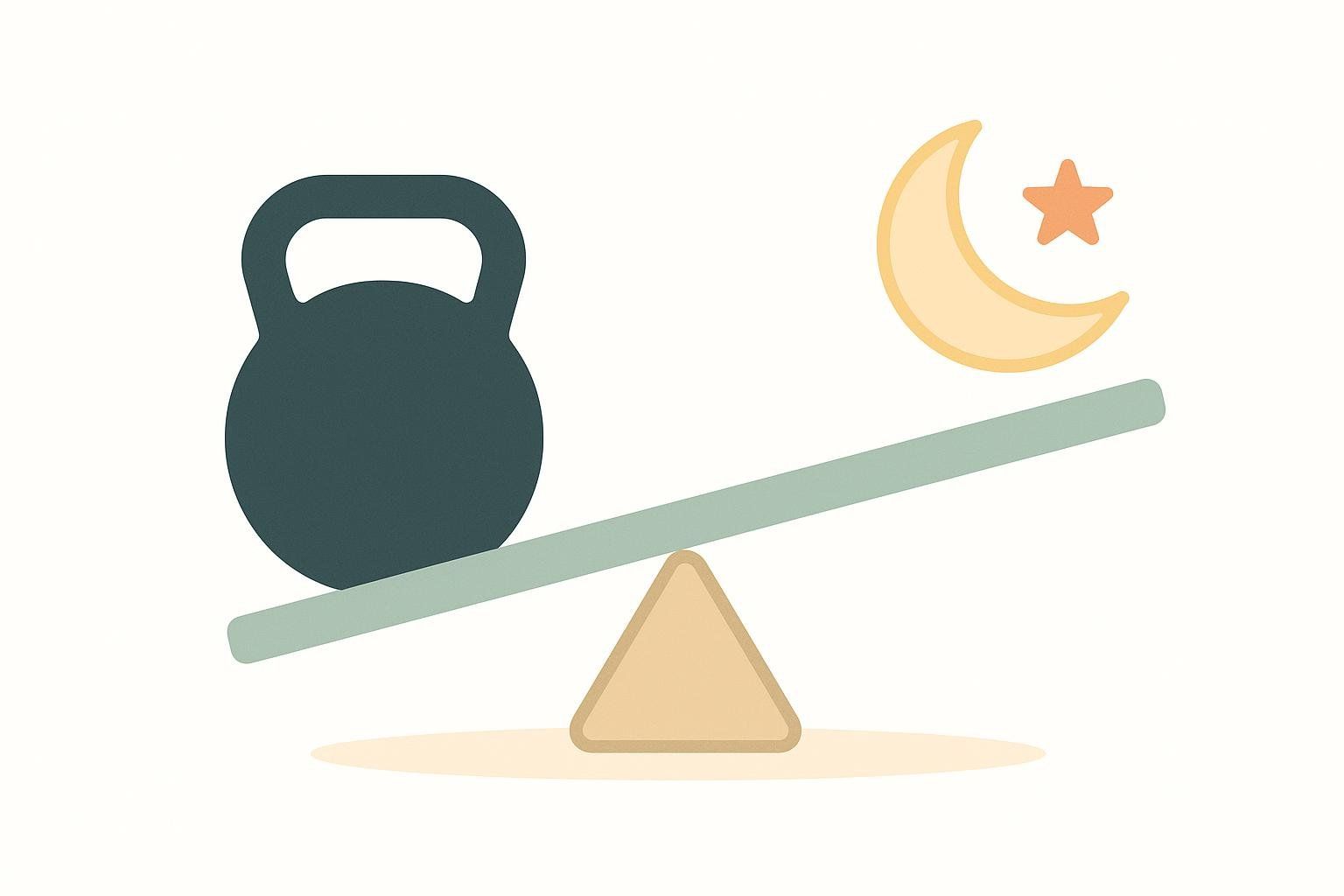
Mistake 1: Training Too Frequently
The Problem: Testosterone production requires adequate recovery. Training HIIT 6-7 days per week can elevate cortisol and suppress testosterone production.
The Solution: Limit HIIT to 3-4 sessions per week maximum, with at least 24-48 hours between intense sessions.
Mistake 2: Ignoring Strength Training Integration
The Problem: Focusing solely on cardio-based HIIT without resistance elements limits muscle-building potential.
The Solution: Include compound movements like squats, deadlifts, and push-ups in your HIIT circuits to maintain muscle mass.
Mistake 3: Poor Work-to-Rest Ratios for Goals
The Problem: Using inappropriate intervals for intended outcomes (too short for fat loss, too long for power).
The Solution:
- For fat loss: 1:1 to 1:2 work-to-rest ratios
- For power: 1:3 to 1:5 ratios for full recovery
- For endurance: 2:1 to 3:1 work-to-rest ratios
Mistake 4: Neglecting Progressive Overload
The Problem: Performing the same routine without increasing difficulty leads to plateaus.
The Solution: Weekly progressions in reps, duration, resistance, or complexity.
Mistake 5: Inadequate Fueling Strategy
The Problem: Not supporting training with proper nutrition, particularly protein intake.
The Solution: Consume 0.8-1.0g protein per pound of body weight daily, with special attention to post-workout nutrition.
Nutritional Strategies to Maximize HIIT Results for Men
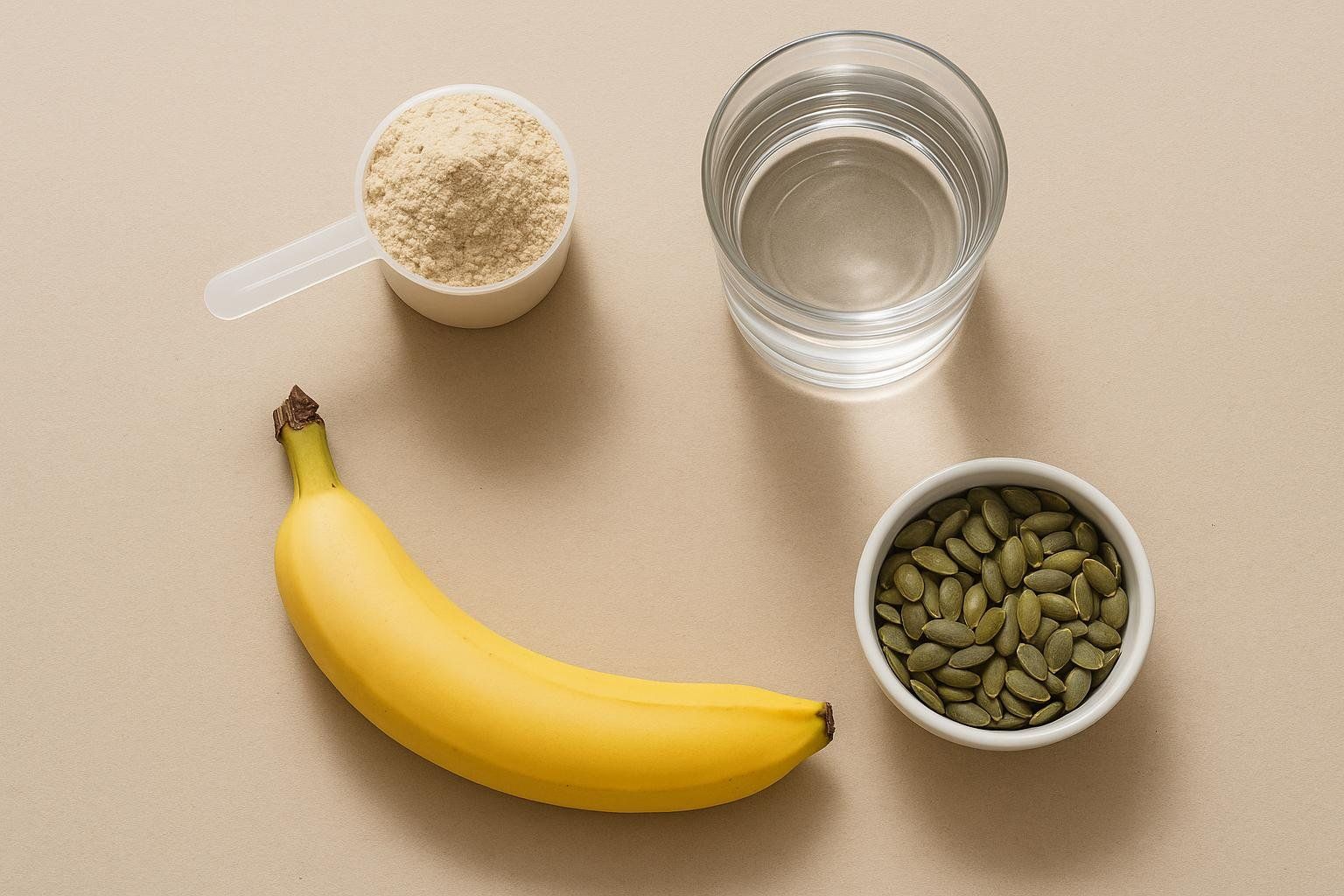
Pre-Workout Fueling (1-2 hours before):
For fat loss goals:
- Consider training in a fasted state or with minimal carbs
- Black coffee
- 5-10g BCAAs if training fasted for muscle preservation
For performance goals:
- 20-30g easily digestible carbs (banana, dates)
- Minimal protein to avoid digestive issues
Post-Workout Recovery (within 60 minutes):
Muscle building focus:
- 25-40g high-quality protein (whey, eggs, lean meat)
- 30-50g carbohydrates to restore glycogen
- Creatine supplementation (3-5g daily for power and strength)
Fat loss focus:
- 20-30g protein to preserve muscle
- Moderate carbohydrates (15-25g) depending on remaining daily goals
- Emphasize whole foods over supplements when possible
Testosterone-supporting nutrition:
- Adequate dietary fat for hormone production (at least 25% of calories)
- Zinc-rich foods (oysters, beef, pumpkin seeds)
- Vitamin D optimization through sun exposure or supplementation
Tracking Progress: Why DEXA Scans Are Game-Changing for Men
Traditional scales can't distinguish between muscle gained and fat lost—both common outcomes of effective HIIT training for men. Precise body composition analysis from a DEXA scan reveals crucial metrics that matter most for male physique goals:
What DEXA Measures for Men:
- Total and regional body fat percentage (track visceral fat reduction)
- Lean muscle mass distribution (identify muscle imbalances)
- Bone density changes (especially important for men over 40)
- Android fat ratio (apple-shaped vs. pear-shaped fat storage patterns)
HIIT-Specific Insights:
- Muscle preservation during fat loss phases (the holy grail of body recomposition)
- Visceral fat reduction (the dangerous belly fat that increases disease risk)
- Bone density improvements from impact exercises
- True progress verification when the scale doesn't move
Optimal Tracking Timeline:
- Baseline scan before starting HIIT program
- Follow-up scan every 12-16 weeks
- Use data to optimize training intensity, frequency, and nutrition strategies
For men specifically, DEXA scans can reveal whether your HIIT program is optimally supporting testosterone production and muscle preservation. If lean mass is declining or fat loss has stalled, adjustments to training variables or nutrition timing may be needed.
Sample 6-Week Progressive HIIT Program for Men
This program is designed to progressively challenge your body while optimizing testosterone production and fat loss.
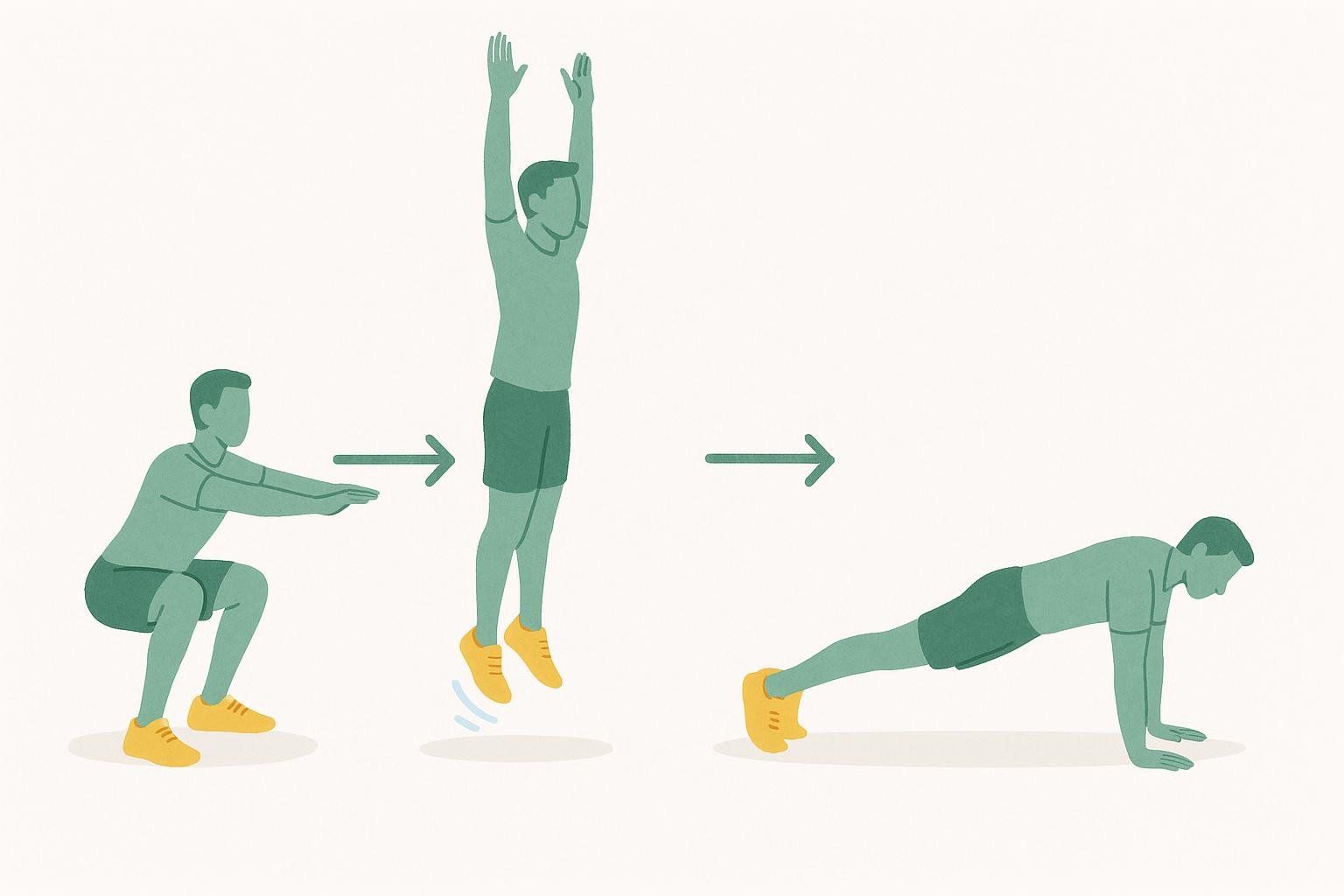
Weeks 1-2: Foundation Building
Focus on learning movement patterns and building aerobic base. On your scheduled workout day, choose one workout (A, B, or C) and complete it fully before your next session.
Workout A - Full Body Power
Protocol: 30 seconds work, 30 seconds rest
- Bodyweight squats
- Push-ups
- Mountain climbers
Workout B - Lower Body Focus
- Jump squats (20s work, 40s rest)
- Lunges (30s work, 30s rest)
- Glute bridges (30s work, 30s rest)
Workout C - Upper & Core
- Burpees (20s work, 40s rest)
- Plank (30s work, 30s rest)
- High knees (30s work, 30s rest)
Instructions for Weeks 1-2: Perform each selected workout for 2 rounds total. Rest for 2 minutes between rounds. Alternate between workouts A, B, and C across your training days.
Weeks 3-4: Intensity Increase
Longer work periods with shorter rest. Perform 3-4 sessions per week, rotating through all four workouts.
Workout A - Compound Power Circuit
Protocol: 45 seconds work, 15 seconds rest
- Burpee to jump squat - Start standing, drop into squat, kick feet back into plank, do a push-up, jump feet forward, then immediately explode into a vertical jump squat
- Push-up to T - Complete a standard push-up, then rotate your body to one side, lifting your top arm toward the ceiling to form a T-shape with your body, return to plank
- Mountain climber burpees - Begin in plank position, perform 4 mountain climbers (2 per leg), then jump feet to hands and explode up into a jump
- Jump lunges - Start in lunge position, jump explosively and switch leg positions mid-air, landing in a lunge with the opposite leg forward
Workout B - Lower Body Power
Protocol: 45 seconds work, 15 seconds rest
- Single-leg jump squats - Perform jump squats on one leg, switch to the other leg halfway through the work period
- Lateral lunges - Step out wide to one side, drop into a deep lunge, push off to return to center, then step out to the other side
- Single-leg glute bridges - Lie on your back with one leg bent, the other extended straight, bridge up using only the planted leg
- Calf raise jumps - Rise up onto your toes, then add a small jump at the peak of each calf raise
Workout C - Upper Body & Core Strength
Protocol: 45 seconds work, 15 seconds rest
- Diamond push-ups - Place hands close together under your chest, forming a diamond shape with thumbs and index fingers
- Pike push-ups - Start in downward dog position, bend your arms to lower your head toward the ground, then press back up
- Plank to downward dog - Begin in plank position, push your hips up and back to downward dog, then return to plank
- Russian twists - Sit with feet slightly off the ground, lean back to engage core, rotate your torso side to side
Workout D - Metabolic Conditioning
Protocol: Tabata (20s work, 10s rest)
- 8 rounds of burpees
- 2-minute rest
- 8 rounds of jump squats
Instructions for Weeks 3-4: Complete 3 rounds of Workouts A-C with 90 seconds rest between rounds. Perform Workout D as written with no additional rounds.
Weeks 5-6: Peak Performance
Maximum intensity with complex movements. Perform 4-5 sessions per week using any combination of the five workout options.
Workout A - Complex Power Training
Protocol: 30 seconds work, 30 seconds rest
- Thrusters - Hold weights at shoulder level, squat down, then drive up explosively while pressing weights overhead in one fluid motion
- Renegade rows - Start in plank position with hands gripping dumbbells, row one weight up to your ribs while balancing on the other arm
- Burpee box jumps - Complete a full burpee, then immediately jump onto a box or platform, step down safely
- Turkish get-up - Lie on your back holding a weight overhead, systematically stand up while keeping the weight locked out above you
Workout B - Athletic Performance Circuit
Protocol: 40 seconds work, 20 seconds rest
- Broad jump to sprint back - Jump forward as far as possible with both feet, immediately turn around and sprint back to your starting position
- Lateral bounds - Jump sideways as far as possible, landing on one foot, then immediately bound back to the other side
- Plyometric push-ups - Perform explosive push-ups where your hands leave the ground during the upward phase
- Bear crawl - Move forward on your hands and feet (not knees), keeping your body low and core engaged throughout
Workout C - Total Body Challenge (EMOM - 15 Minutes)
- Minutes 1-3: 6 burpee broad jumps
- Minutes 4-6: 12 mountain climbers followed by 20-second plank hold
- Minutes 7-9: 15 jump squats
- Minutes 10-12: 10 push-ups followed by 30 seconds of high knees
- Minutes 13-15: 8 complex burpees (perform a standard burpee, adding 4 mountain climbers in the plank position before jumping feet forward)
Workout D - Power Endurance Circuit
Instructions: Complete one round by performing all reps for all four exercises consecutively. Complete 5 rounds in total for the fastest time possible.
- 15 burpee broad jumps
- 30 jump squats
- 40 mountain climbers
- 50 high knees
Workout E - Sport-Specific Power (Optional)
Choose sport-specific movements in HIIT format: boxing intervals, basketball drills, or soccer agility work.
Instructions for Weeks 5-6: Complete 4 rounds of Workouts A-B with 90 seconds rest between rounds. Workouts C, D, and E are performed exactly as written without additional rounds.
After completing this program, consider getting a follow-up DEXA scan to objectively measure your body composition improvements and guide your next training phase.
Conclusion: Unleash Your Male Potential with HIIT
HIIT training offers unparalleled efficiency for men seeking to optimize their physique, performance, and health. The unique physiological advantages men possess—higher testosterone levels, greater muscle fiber recruitment, and enhanced power output—make HIIT particularly effective for male fitness goals.
Whether you're a busy professional maximizing limited time, an athlete breaking through plateaus, or a man over 40 prioritizing health optimization, the protocols in this guide provide science-backed solutions tailored to your needs.
The key to HIIT success lies in consistency, progressive overload, and intelligent programming that works with your body's natural hormone production rather than against it. Start with the appropriate protocol for your fitness level, track your progress objectively with precise body composition analysis, and adjust your approach based on results.
Begin your journey toward peak male performance today. Your strongest, leanest, most energetic self is waiting on the other side of consistent, intelligent HIIT training.
